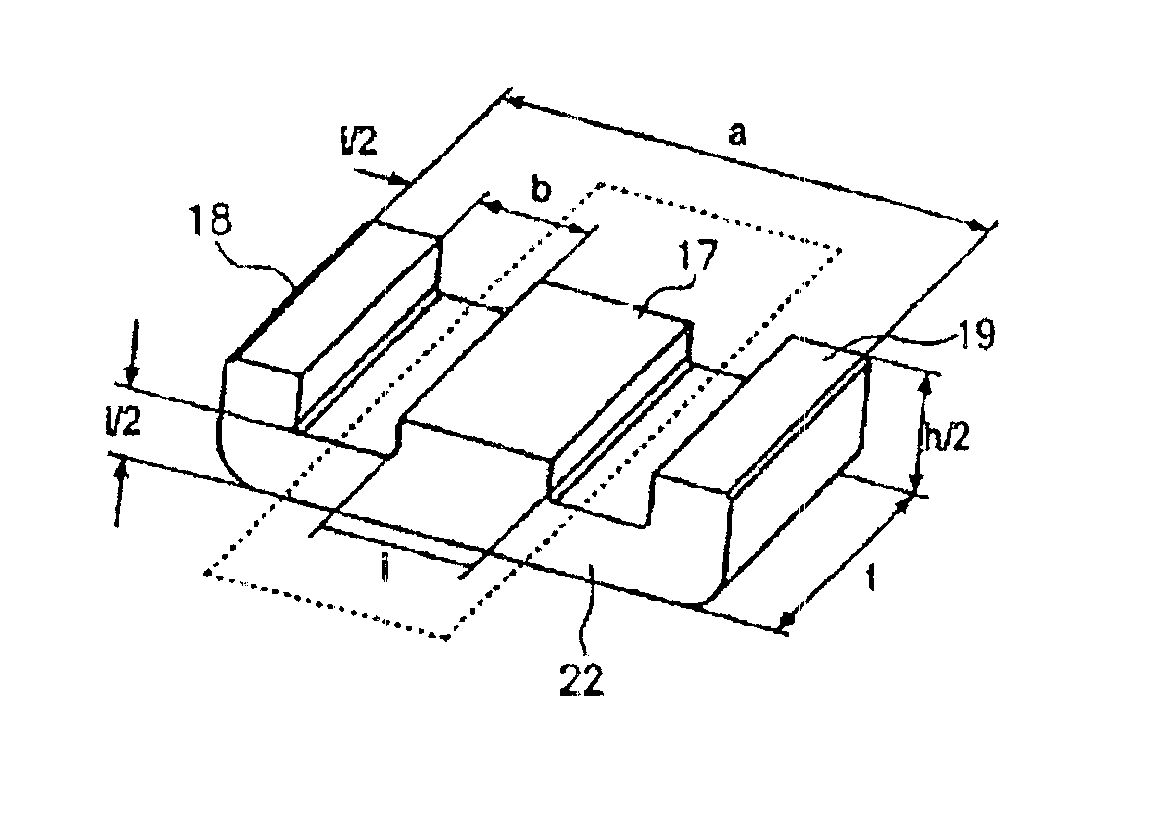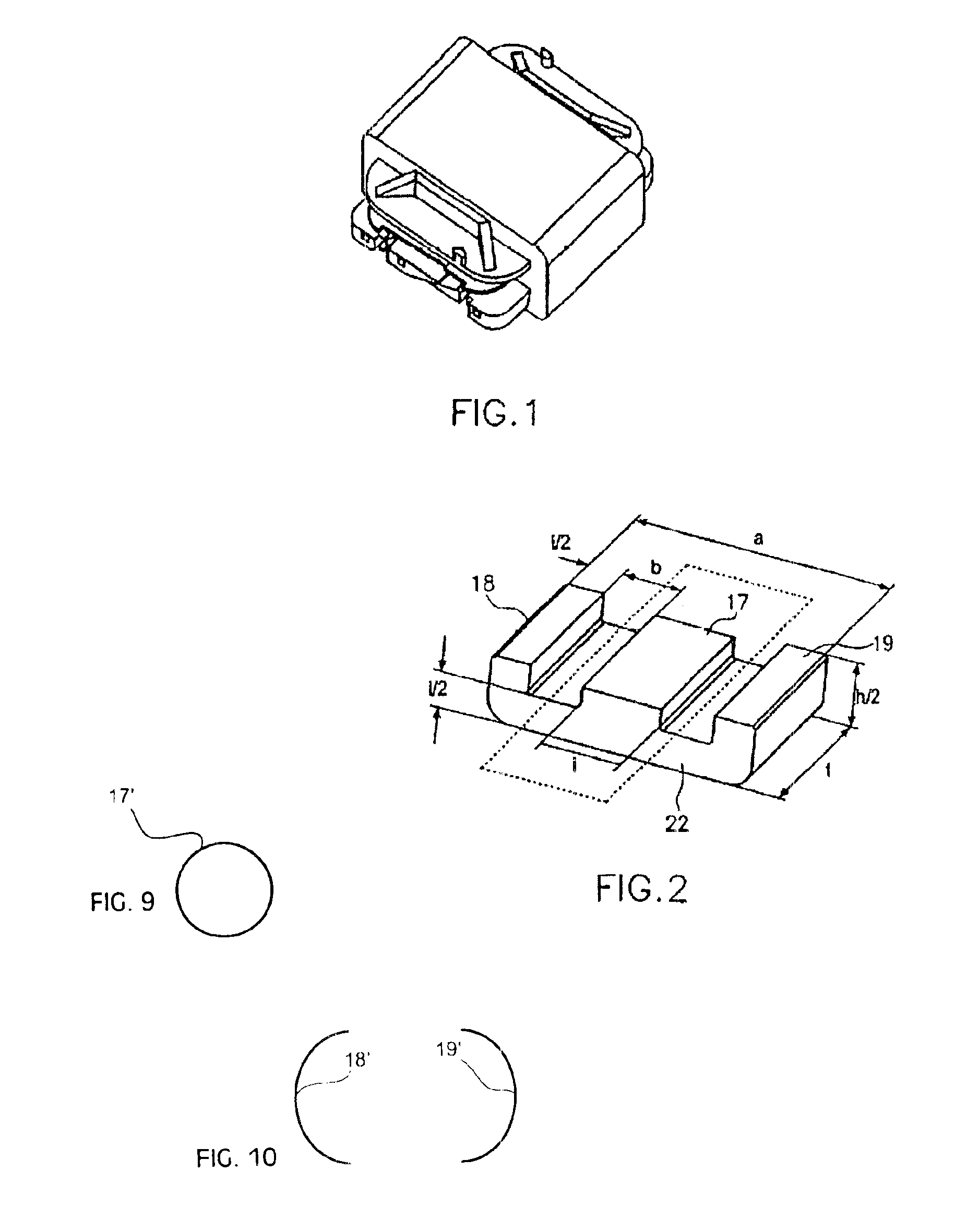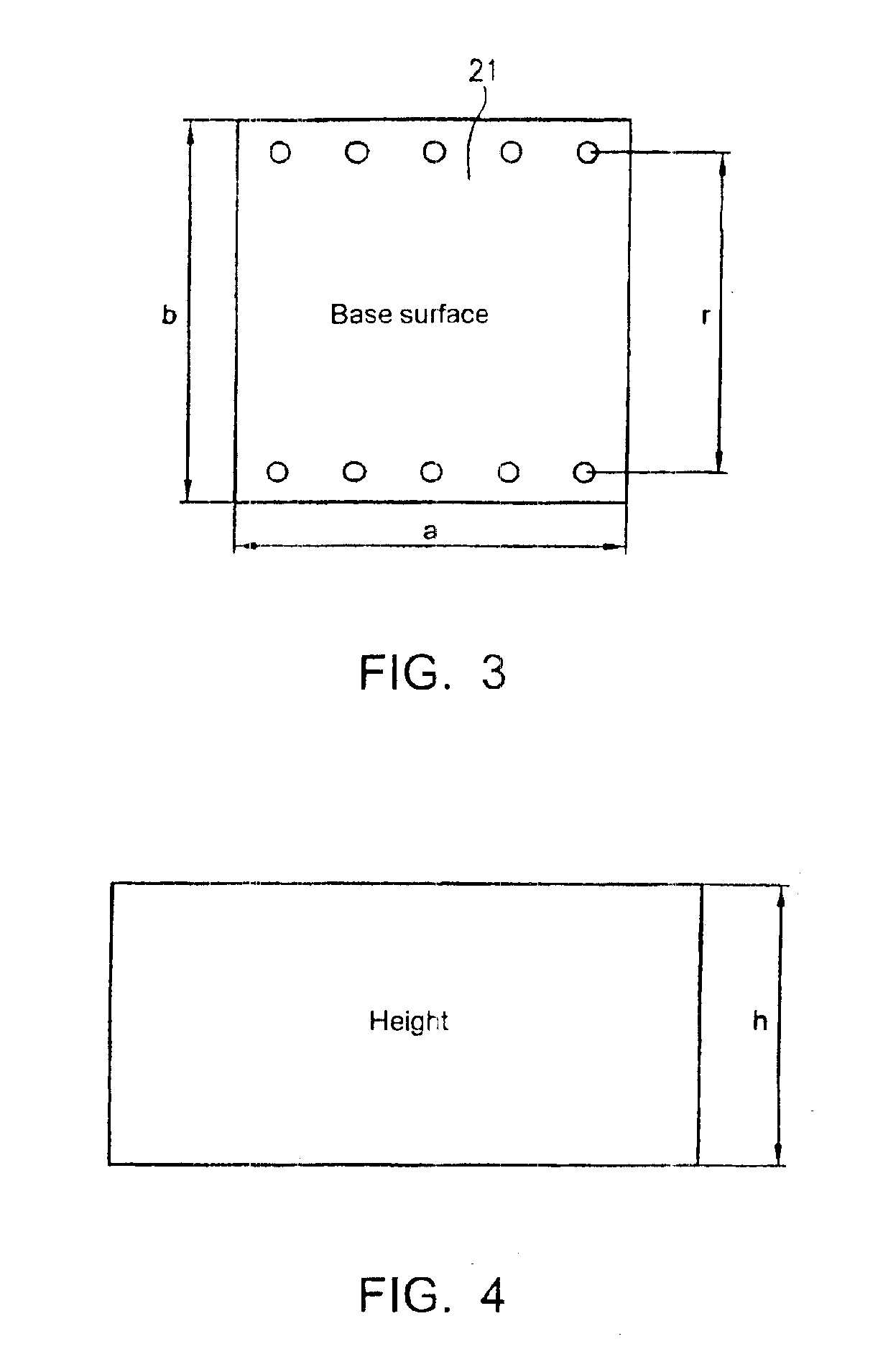Oscillating inductor
a technology of oscillating inductors and inductance, which is applied in the direction of inductance with magnetic cores, coils, electric variable regulation, etc., can solve the problems of high copper losses, high eddy current losses in copper windings, and high copper losses, so as to maximize the magnetic cross section, minimize the stray field, and reduce the effect of eddy current loss
- Summary
- Abstract
- Description
- Claims
- Application Information
AI Technical Summary
Benefits of technology
Problems solved by technology
Method used
Image
Examples
Embodiment Construction
[0025]Quite fundamentally, the following explanatory notes should be preceded at this point by the following: even though the explanatory notes in the following text essentially relate to the description of the exemplary embodiments with a double-E core or with a double-EQ core, the explanatory notes also apply in an entirely corresponding manner to E-I cores and even, in a general manner, to core shapes with a center limb 17 and two outer limbs 18, 19. This is because the oscillating inductor properties that are required according to the object can also be achieved by such general core solutions. The only critical factors in each case are the criteria as defined in the individual independent patent claims.
[0026]The basic configuration of oscillating inductors according to the invention with a symmetrical double-E core which has two geometrically identical core windows, a cuboid center limb 17 and two cuboid outer limbs 18, 19 is directly evident when FIGS. 1, 2, 5, 6 and 7 are cons...
PUM
| Property | Measurement | Unit |
|---|---|---|
| width | aaaaa | aaaaa |
| width | aaaaa | aaaaa |
| area | aaaaa | aaaaa |
Abstract
Description
Claims
Application Information
 Login to View More
Login to View More - R&D
- Intellectual Property
- Life Sciences
- Materials
- Tech Scout
- Unparalleled Data Quality
- Higher Quality Content
- 60% Fewer Hallucinations
Browse by: Latest US Patents, China's latest patents, Technical Efficacy Thesaurus, Application Domain, Technology Topic, Popular Technical Reports.
© 2025 PatSnap. All rights reserved.Legal|Privacy policy|Modern Slavery Act Transparency Statement|Sitemap|About US| Contact US: help@patsnap.com



